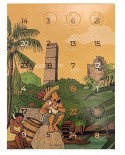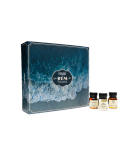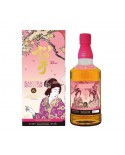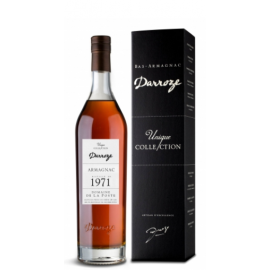Darroze Domaine de Monturon 1987 - 40.5%
For years, Mr. Bachala was a lion tamer in the Zavatta circus before turning his hand to armagnac production in the late ‘70s. The humid conditions in his ageing cellars have contributed to the fact that his armagnacs have a lower alcohol level.
Darroze Domaine de Paguy 2005 - 50%
The Darzacq family is long established and well respected in the Bas Armagnac region. Albert Darzacq, while working as a local farmhand, ensured his estate was well looked after, the result being that the Paguy armagnacs have for years been regular prizewinners in local competitions.
Darroze Domaine de Salie 1995 - 48.5%
For years, Darroze has been offering you a Unique Collection of vintage Bas-Armagnacs sourced exclusively from the best terroirs and finest estates of the appellation.
Darroze Grands Assemblages 12Y
After 10 years in contact with the oak, Armagnac starts to take on the aromas of ageing.
Darroze Grands Assemblages 20Y
It is certainly the most wonderful age for the Armagnac enthusiast who appreciates the force and the maturity.















